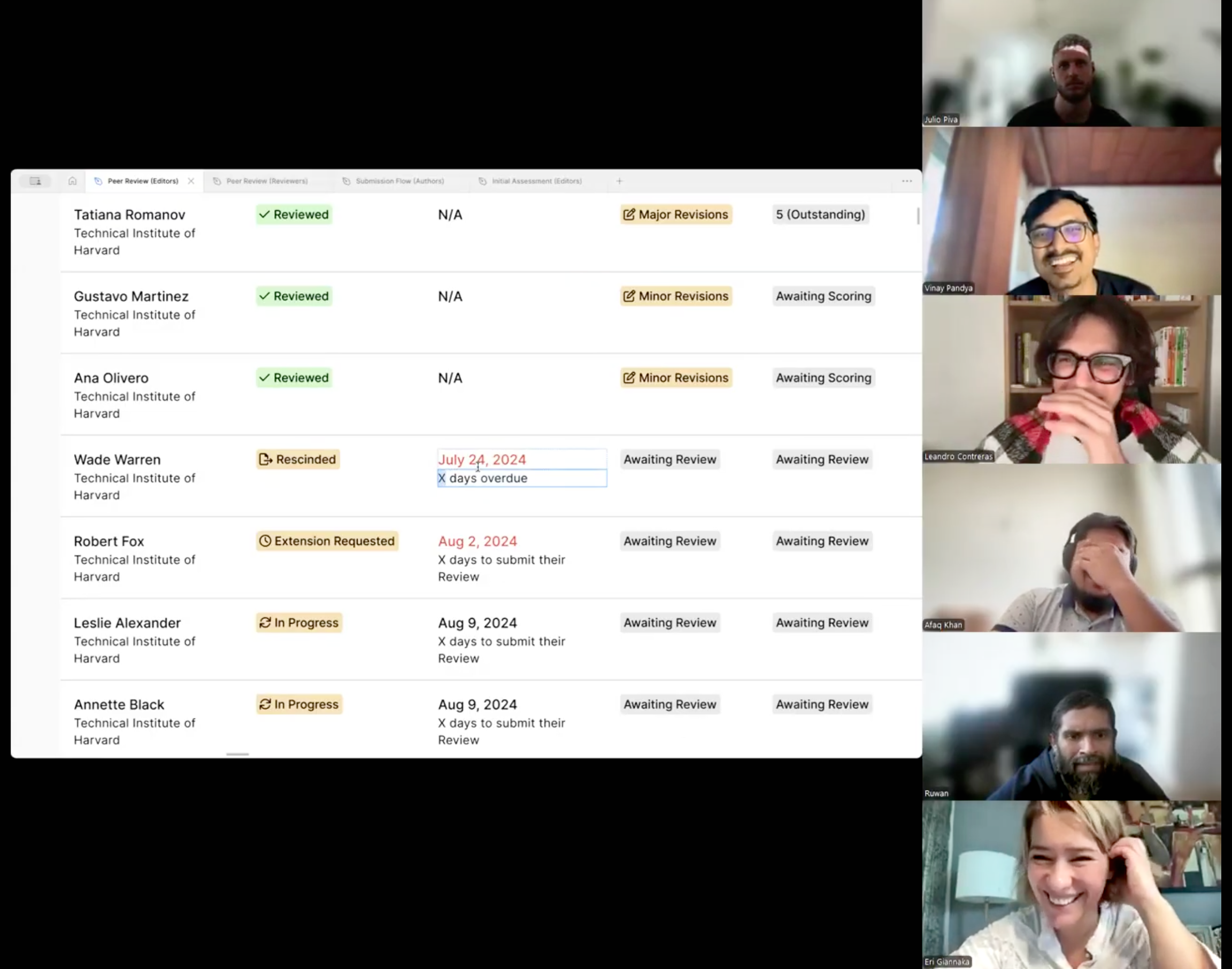NOVEMBER 27, 2024
Designing Next-Gen Peer Review: Morressier’s Journal Manager
In 2024, Morressier, a company operating in the Scientific Publishing world, aimed to impact the market with Journal Manager: a next-gen CMS with fast peer review workflows and tools to boost team productivity and reduce publishing times.
I was tasked to elevate all client-facing features from an MVP to a polished first release, including all peer review systems.
View ProductContributions
Transformed an MVP into a functional system, lead workshops & validation cycles and supported on product direction
Team
Group Product Manager + 4 Engineers
Timeline
4 Months (Aug - Nov 2024)
The goal
I created solutions that positively impacted both Publishers and Reviewers:
Customizable
Communication Tools
Adaptative
Review Dashboards
Configurable
Review Systems
Let’s take a look at how this was possible!

First, to kickstart my work, I centered four support activities around this key question:
What makes an excellent peer review experience in today’s world, and what’s stopping us from doing it?
Discovery & Validation
1. Synthesized research points from internal repositories, previously conducted competitive analyses and market research, to flesh out our users and identify gaps.
2. Deconstructed and mapped the entire Peer Review process along with 2 PMs and 1 Designer, to build common understanding of the project’s complexities and ensure a smooth first release.
3. Sketched early concepts to get early buy-in, accelerate testing, communicate core concept ideas cross-functionally, and to sharpen requirements and JTBD with my lovely PM.
4. Conducted validation sessions with our UX Researcher, wrote interview scripts, and compiled insights to inform key stakeholders how results shaped the experience and moved towards our goal.
Key Learnings
Peer review thrives on adaptability: a next-gen peer review system must be configurable to meet the unique needs of reviewers and publishers.
Collaboration brings clarity: our group mapping sessions fostered alignment on direction, scope, and team responsibilities, especially when tackling complexity.
Streamlined systems are essential: outdated systems make it tough for publishers to optimize manuscript reviews, making it difficult to find willing reviewers.
Gaps in the process risk everything: A broken peer review lifecycle disrupts careers, devalues publishers, and threatens the integrity of science.
Designing & Building
With my newfound knowledge, I acted as a bridge between Product and Development, working closely with my team to move towards fast implementation:
Designed and delivered tech specs for the entire Peer Review experience for Publishers and Reviewers, and created user stories alongside my PM.
Collaborated in a Waterfall model, working with engineers and Product to define with a scope fitted for fast delivery, ensuring usability while keeping development efficient.
Conducted multiple rounds of cross-functional design reviews and grooming sessions to get blockers out of the way and accelerate implementation.
Performed design QA and established 1:1 syncs with Engineers to discuss and understand compromises and ensure a safe implementation.
Highlights of the Experience
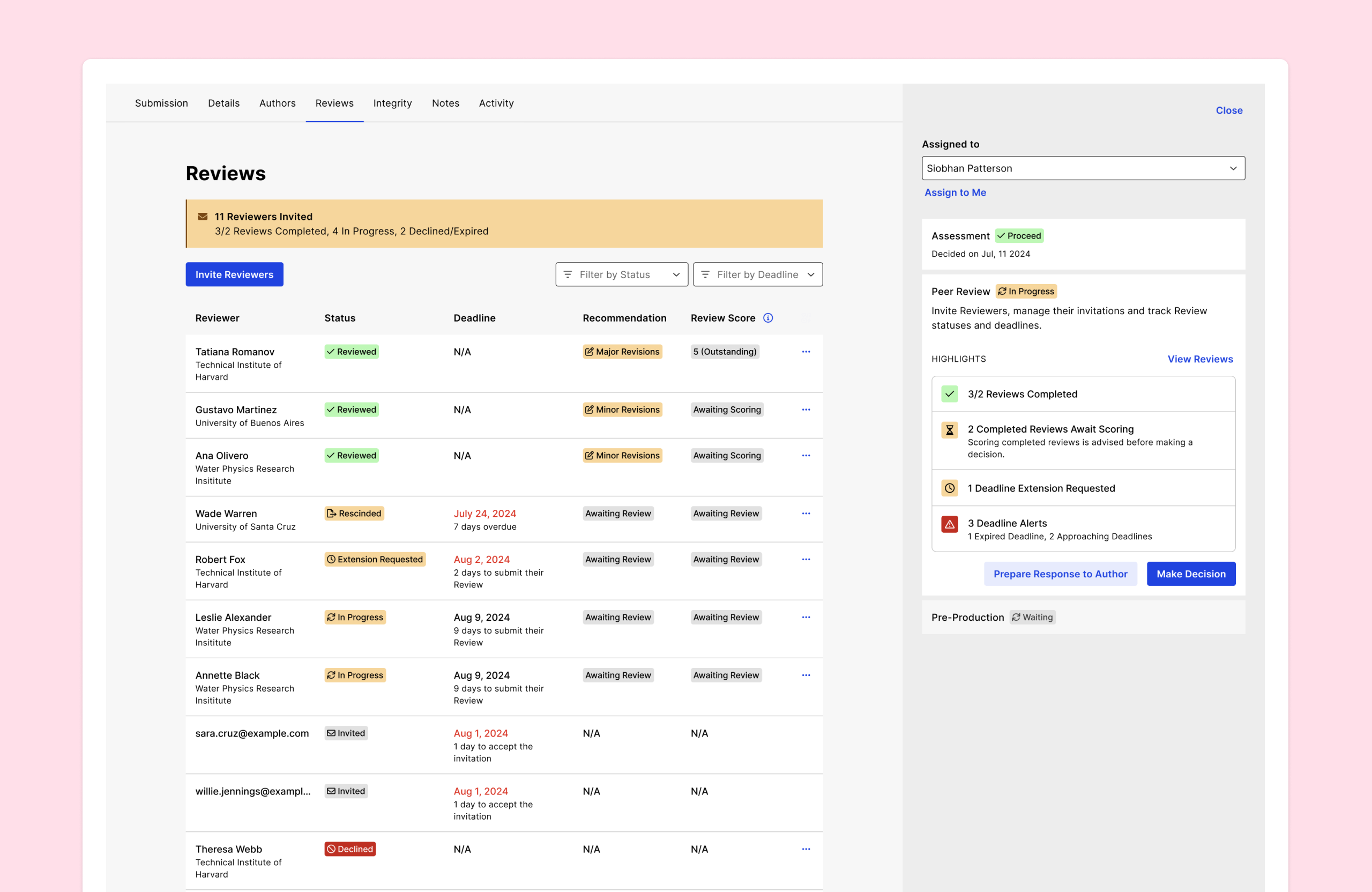
Editorial Dashboards
Editors can access dashboards with key peer review information to make informed decisions. Decision making tools are always present in the UI, ensuring Editors have everything they need to act efficiently.

Reviewer Forms
Reviewers can evaluate Submissions with forms that can be customized by Admins, across different article types. Clear guidelines are provided to set Reviewers with the right context, along with options to recognize their work.
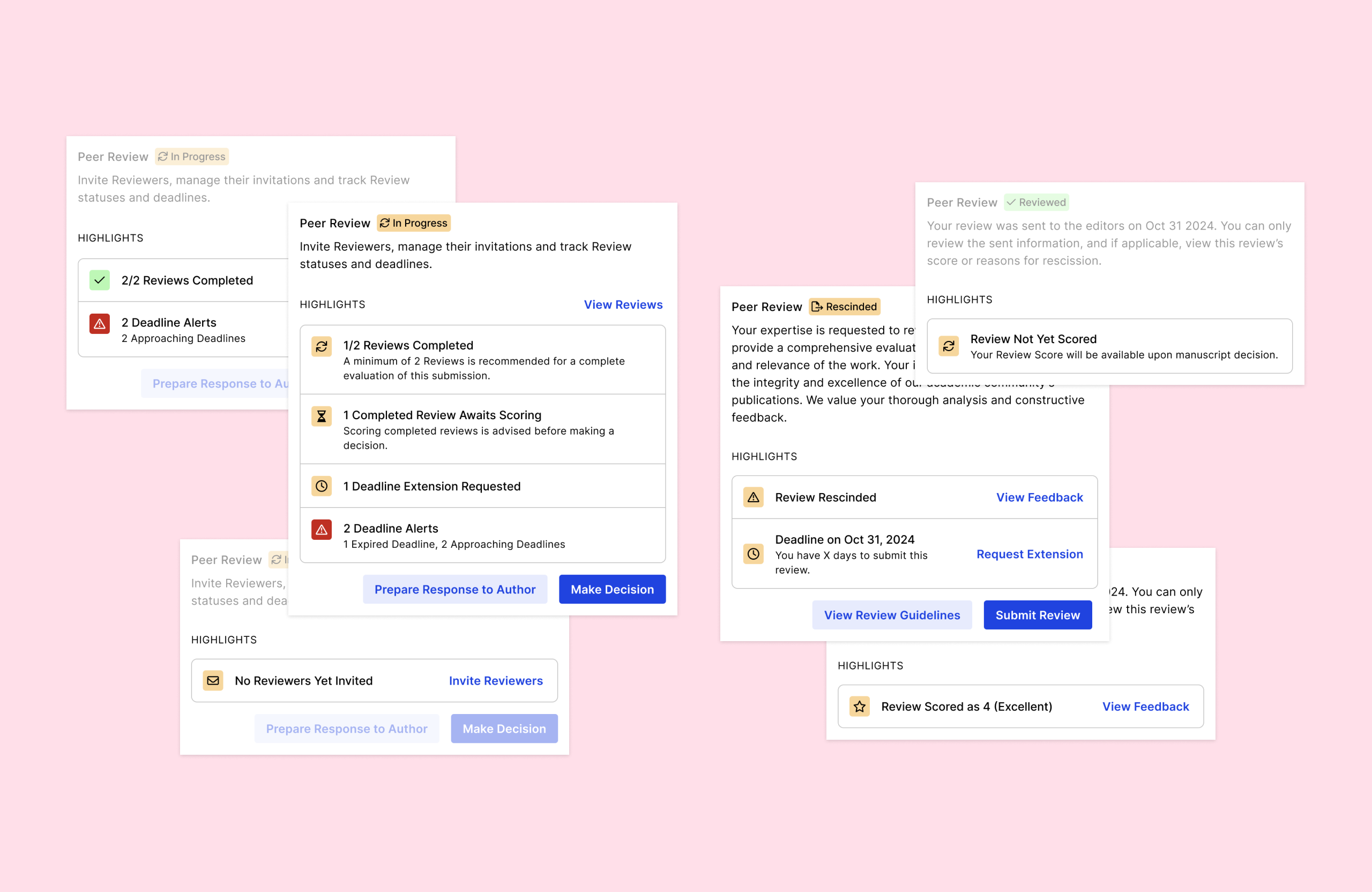
Peer Review Highlights
Every page in the system has highlights with key information — requests, progress, and recommendations — to support informed publishing decisions in the Journal Manager system.

Reviewer Dashboards
Reviewer dashboards help to locate specific reviews as needed, with tabs that split completed reviews from active ones, contextual overlays and detailed filters.
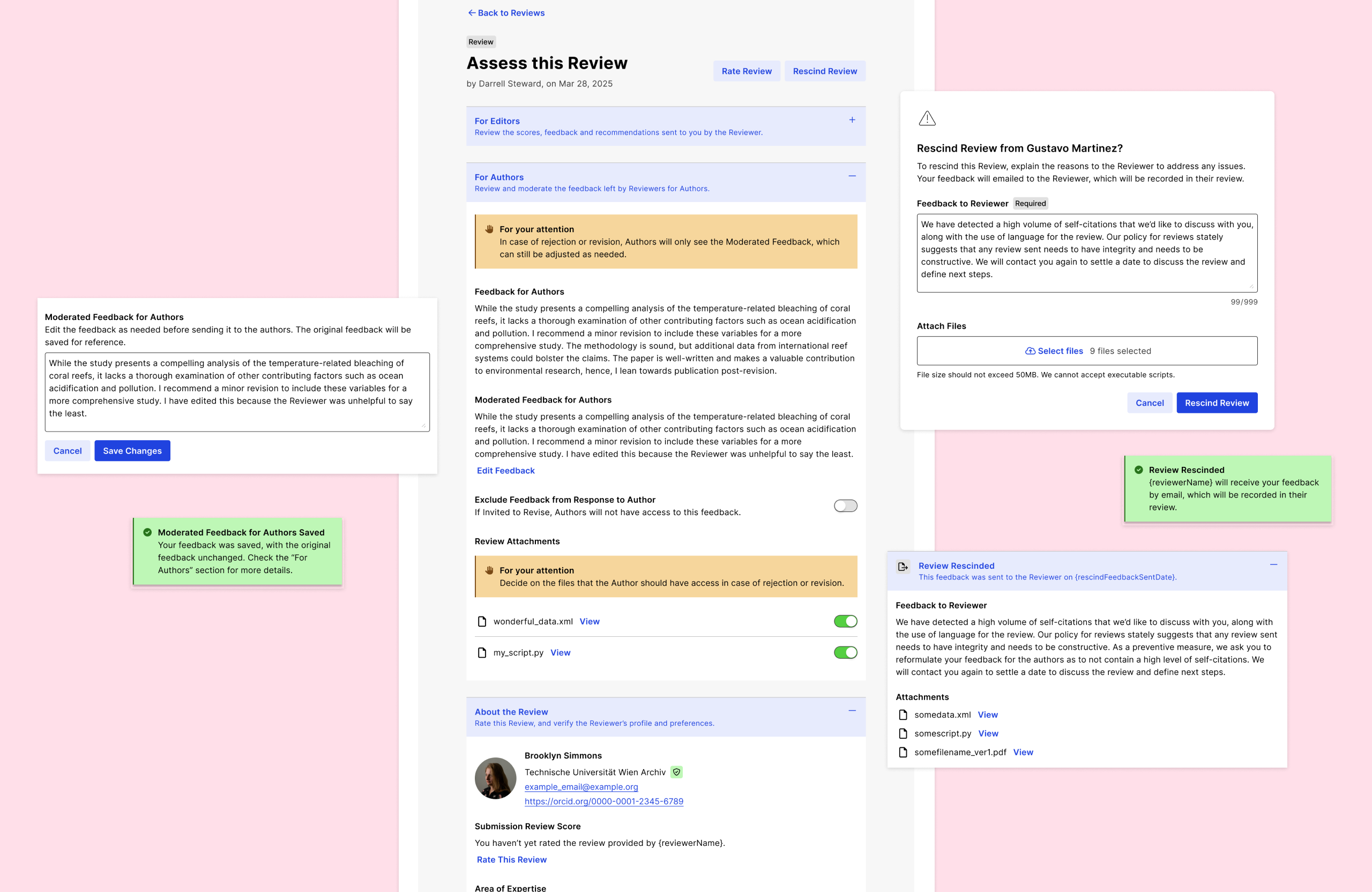
Shaping Reviewer Feedback
Editors can select and moderate feedback to be shared with Authors, while keeping the original feedback for records. Reviews can be sent back for improvement or clarification, ensuring a safe publishing process.
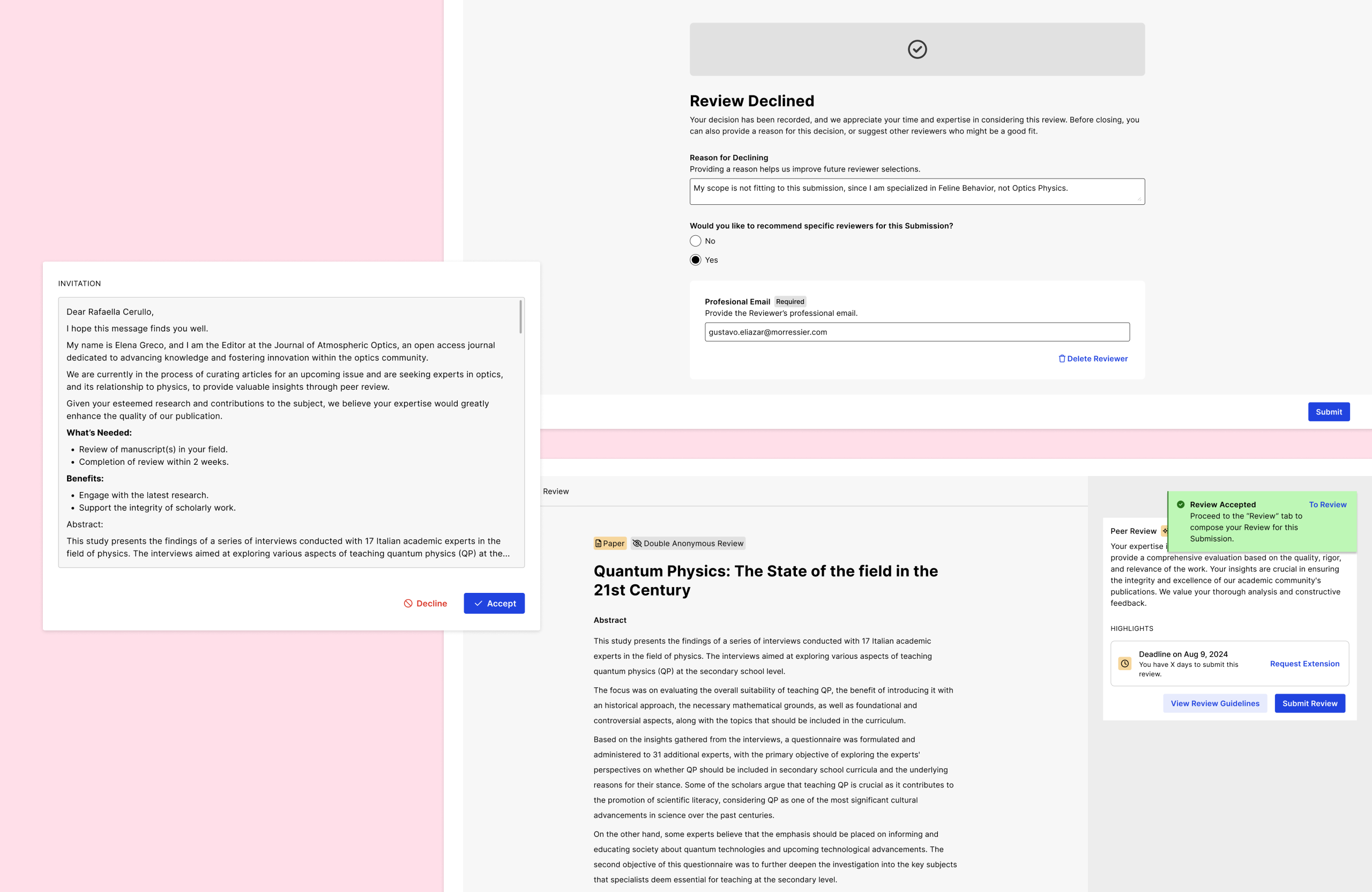
Reviewer Invitations
Editors can send customizable invites to Reviewers, tailoring their messaging according to a Reviewer’s expertise, accelerating the process. Reviewers can provide reasons for declining, and suggest alternative reviewers.
Let’s wrap this up!
A next-gen peer review experience in today’s world, is one that’s centered around a configurable system that supports each actor in the process.
The enhancements to this Peer Review system will allow Editors to monitor the process in real-time, support Reviewers on providing clear evaluations that timely reach Authors, making Publishers happy as they publish faster.
This is expected to result in faster decision-making, improved participation, and higher-quality reviews across the board.
Impact
Next Steps
As the peer review module in Morressier’s Journal Manager evolves, future features like actionable highlights, customizable communication tools, and advanced Reviewer search will continue enhancing the user experience, driving Morressier’s purpose to accelerate scientific breakthroughs.
Team Shoutout
A big big thank you to my partner in crime in this project, Eri Giannaka (Linkedin), the best Product Manager one could ever work with. I have no words to describe how much I appreciate you and how you transformed our team with your warmth and intelligence. Anyone who works with Eri will be lucky and learn immensely!
Big up to all the team devs: Júlio Piva (Linkedin), Afaq Khan (Linkedin), Vinay Pandya (Linkedin) and Ruwan Geeganage (Linkedin)! Thank you for your amazing feedback, for the availability and for the laughs!
